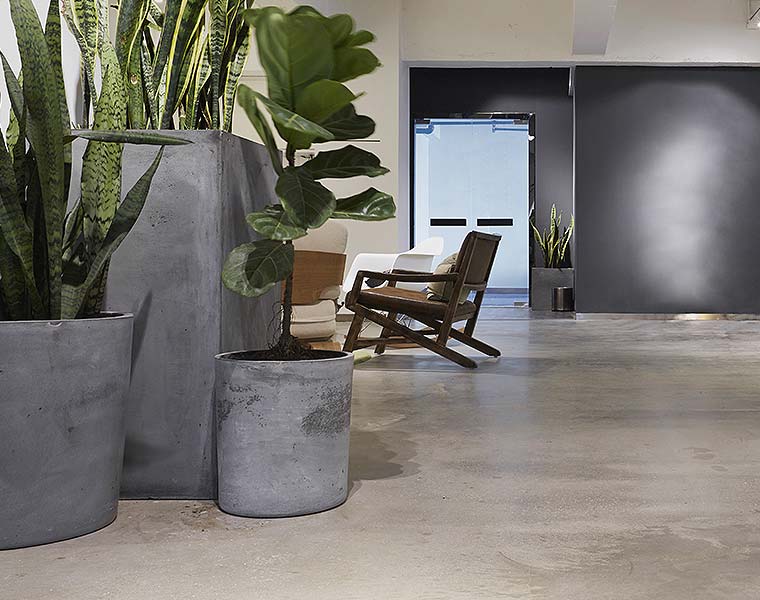You probably won’t need any comprehensive studies or alarming news headlines to tell you that we are now spending more time indoors than ever before. Your long working hours and hectic schedules are likely enough of a testament to the fact. However leading window and blind manufacturer, VELUX carried out an interesting study about the ‘Indoor Generation’ which statistically proves that we are now spending a shocking 90% of our time inside.
The same study also revealed that indoor air can be up to five times more polluted than outdoor air, which means that the air quality in our homes and working environments now needs some serious attention. When it comes to the office, this is particularly crucial if you have just undergone – or are currently carrying out – a workplace fit out or refurbishment project as air pollution will be heightened.
Office air quality can be polluted by things like food particles, excess carbon dioxide, bacterial or viral germs, excess moisture, synthetic furniture fibres and animal hairs if you are a pet-friendly workplace. With so many of us now spending so much more time ‘in the office’, the ill effects of poor air quality now need addressing in order to ensure physical health and mental wellness at work.
The benefits of indoor plants
In 1989, NASA carried out its famous ‘Clean Air’ study which is still regularly cited today. The findings reveal that plants are a highly effective way to remove harmful toxins from the atmosphere and therefore dramatically improve indoor air quality. In fact, NASA recommends including one plant per square foot of space – but why?
Well, as part of the research, NASA identified a number of common toxins found in indoor atmospheres and investigated the effects this can have on the physical and mental wellbeing of its inhabitants…

Those which most probably apply to your workspace are:
Trichloroethylene (Found in things like: printing inks, adhesives, paints)
Symptoms include: dizziness, nausea, headaches, drowsiness
Formaldehyde (Found in things like: paper towels, plywood, synthetic fabrics, paper bags)
Symptoms include: irritation of nose and throat, respiratory problems, throat soreness
Benzene (Found in things like: plastics, synthetic fibres, dyes, detergents, glue, paint, furniture wax)
Symptoms include: eye irritation, dizziness, drowsiness, headaches, heart problems, brain fog
Xylene (Found in things like: printing inks, rubber, leather)
Symptoms include: oral irritation, headaches, heart problems
Ammonia (Found in things like: window cleaners, floor waxes)
Symptoms include: eye irritation, coughing, throat soreness
Incorporating biophilic elements such as plants and greenery within a workspace interior design scheme will help reduce carbon dioxide levels and level of toxins in the air, as well as increasing oxygen and purifying the atmosphere.
Personal hygiene and desk cleanliness
We all know how important it is to limit clutter in a working environment but what many office workers aren’t aware of it how unhygienic their desks and surrounding equipment can be. According to research by Printerland, the average office desk has 400 more germs than a public toilet seat. The average keyboard has 3,295 germs on it and the average phone has 25,127 germs on it.
In order to help reduce things like excess food particles and moisture, staff should be encouraged to clean the space where they work on a regular basis. Cleaning up spillages – especially liquid – is crucial in keeping mould and dampness at bay.
Our top tips:
- Use microfiber cloths as they pick up dirt and dust particles more effectively than vacuum cleaners and regular cleaning cloths.
- Use cleaning products which are low in volatile organic compounds (VOCs) as they tend to be higher in toxins.
- Provide something like a workcafe or canteen where food can be consumed away from the desk.
Other things to consider…
- Keep air vents clear and replace filters every 6-12 months.
- Use a dehumidifier to maintain 30-50% humidity to keep things like dust mites, allergens and mould to a minimum.
- Place high-traffic or highly populated work settings nearest to windows which can be opened to let fresh air circulate and reduce the spread of germs from person to person.
- Don’t block vents and air sources with things like partitions and storage.
- Don’t overcrowd furniture as this will create a high density of synthetic particles.
- Choose organic, anti-allergen, antibacterial and anti-pollutant fabrics over synthetic where possible.
